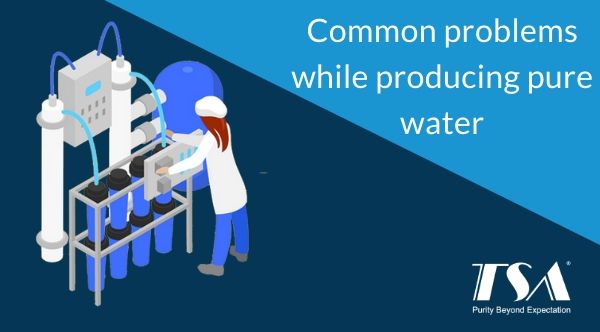Modern manufacturing processes have come a long way from the industrial revolution of the late 1800s. Gone are the days of steam-powered machines and manual steps of production, modern manufacturing methods employ automated systems for mass production. These machines are designed to be precise and efficient. Bringing technology into manufacturing has helped producers improve quality and deliver better products. Industries from automobile manufacturing to food and beverage production to pharmaceutical manufacturing have successfully implemented highly automated systems into their production lines and have improved quality, profits and client satisfaction.
One of the most common resources used in manufacturing processes is water, specifically pure water. It is imperative that the water used in various production steps is treated appropriately and is up to the purity requirements of the end product. Therefore, any manufacturing plant using water will have deployed a pure water treatment system. Now, these requirements widely vary across different industries, for example, the water purity stipulation for a pharmaceutical process where it is an essential ingredient is higher than an oil and gas plant that requires water just for cleaning purposes. Whatever the regulations say about water purity, the basic processes and systems remain the same. National and international institutions have put in place strict standards and regulations regarding the quality of the water used and the processes employed to produce it. Also, manufacturers need to ensure product quality among other business activities. This leads to complications and the chances of a genuine human error increase. Any error, in turn, gives rise to problems both systemic and financial to the manufacturers. Below we have listed, some of the most common problems faced by manufacturers when designing a new industrial water treatment process or updating and existing equipment-
Training
Most water treatment plants are highly technological and the teams are large too. A very common problem faced by manufacturers is their staff misunderstanding the complex machinery and intricate aspects of the systems. This leads to underutilization of the water treatment plant since the operator is not fully equipped to utilize the machine to its fullest. On-going training for every member of the team is an important investment that manufacturers ought to make. This enables your workers to understand the details of the system, know which parameters to monitor and identify anomalies, understand and promptly deploy preventive maintenance measures as and when needed.
Maintenance
Poor maintenance always affects the performance of the water system. Manufacturers need to implement periodic maintenance drives across all their systems. Failure to do this impacts the efficiency of the water treatment system increasing costs resulting in financial losses and sometimes even damaging the equipment. It is important to have a continual maintenance process in the water purification systems because it helps prolong the life of the equipment, reduces downtime and ultimately impacts the bottom line positively.
Variation in feed water quality
Feedwater is the source of water that is input in the pure water system. Depending upon the source, a pre-treatment system may need to be installed in addition to the main pure water unit. Still, one of the major areas that are overlooked while designing a purified water generation system is taking into account the variations in feed water quality. There are seasonal changes in the turbidity, flow, and chemistry of the feed water. This can cause serious problems by contaminating the process and worse the end product. Such discrepancies can also result in large fines from authorities when the discharge regulations are not met. Designing a slightly oversized treatment system anticipating the variations and installing variable controls on chemical feed systems is a very efficient solution to fluctuations in the feed water.
Changes in quality requirements
As important it is to monitor and maintain and quality of the feed water (the input), it is critical to track the changes in the quality requirements set by regulatory bodies. This is a common occurrence that sometimes happens after plants have been installed for years. The plant can be running well and designed to deliver specific water quality, and then the standards might be tightened and the plant is no longer compliant. To mitigate this, plants need to be designed with forward-thinking anticipating or even expecting changes in the regulations. Designing a plant that can handle expansion and quality improvements makes your water purification unit future-proof and increases operational life.
The above common problems for water treatment plants can be solved by partnering with a competent pure water treatment plant manufacturer. TSA Water Systems have been designing, manufacturing and installing pure water systems for more than a decade now. We help our clients evaluate their water treatment issues and provide ideas and resources to overcome them. Our efficient designs help protect our clients from losses, damaged reputations, and violations of regulations.






